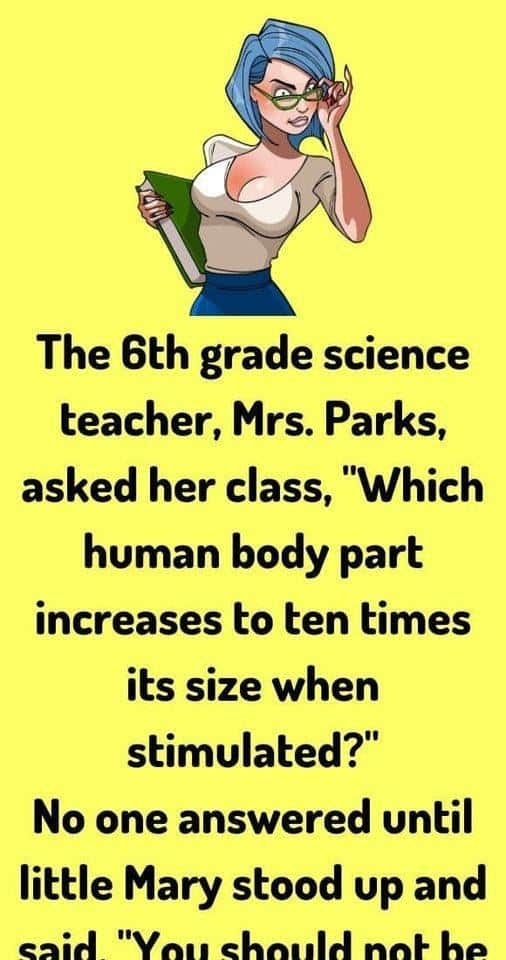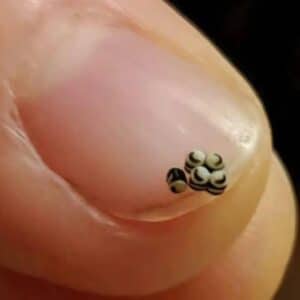The 6th grade science teacher, Mrs. Parks, asked her class, “Which human body part increases to ten times its size when stimulated?”
No one answered until little Mary stood up and said, “You should not be asking sixth-graders a question like that! I’m going to tell my parents, and they will go and tell the principal, who will then fire you!”
Mrs. Parks ignored her and asked the question again, “Which body part increases to 10 times its size when stimulated?”
Little Mary’s mouth fell open.
Then she said to those around her, “Boy, is she going to get in big trouble!”
The teacher continued to ignore her and said to the class, “Anybody?’
Finally, Billy stood up, looked around nervously, and said, “The body part that increases 10 times its size when stimulated is the pupil of the eye.”
Mrs. Parks said, “Very good, Billy,” then turned to Mary and continued.
“As for you, young lady, I have three things to say: One, you have a dirty mind. Two, you didn’t read your homework. And three, one day you are going to be very, very disappointed.”
This joke plays on expectations and double meanings, creating humor through misinterpretation. Mrs. Parks’ question sounds suggestive at first, leading Mary to assume the worst. The punchline lands when Billy correctly answers “the pupil of the eye,” proving Mary’s assumption wrong and setting up the teacher’s witty response.
The humor comes from Mary’s embarrassment, Mrs. Parks’ clever comeback, and the ironic twist. It’s a classic example of how misunderstandings—especially about sensitive topics—can lead to funny yet teachable moments.






